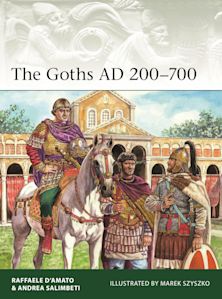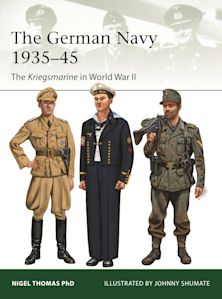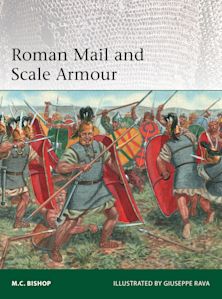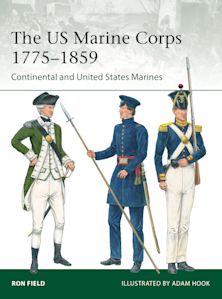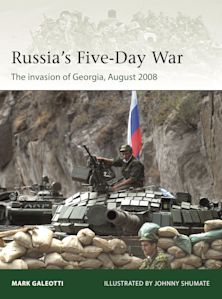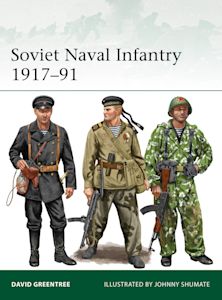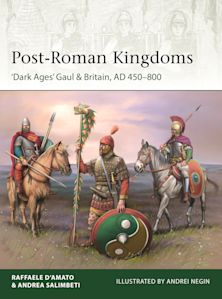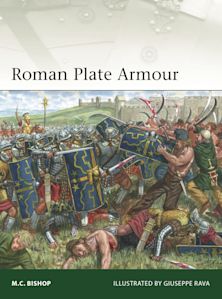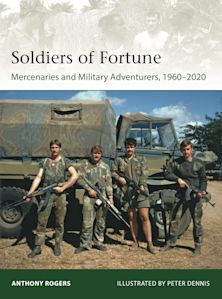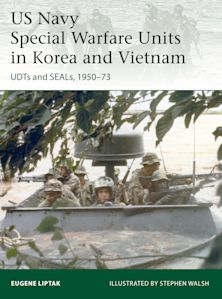Osprey Publishing Home
Roman Battle Tactics 109BC–AD313
- Delivery and returns info
-
Free CA delivery on orders $40 or over
Description
The book clearly explains and illustrates the mechanics of how Roman commanders - at every level - drew up and committed their different types of troops for open-field battles. It includes the alternative formations used to handle different tactical problems and different types of terrain; the possibilities of ordering and controlling different deployments once battle was joined; and how all this was based on the particular strengths of the Roman soldier. Covering the period of "classic" legionary warfare from the late Republic to the late Western Empire, Ross Cowan uses case studies of particular battles to provide a manual on how and why the Romans almost always won, against enemies with basic equality in weapon types - giving practical reasons why the Roman Army was the Western World's outstanding military machine for 400 years.
Table of Contents
the size of intervals · LEGIONARY BATTLE LINES AND MANOEUVRES: Simplex acies: Forum Gallorum, 43 BC – Ruspina, 46 BC – Carrhae, 53 BC: disastrous result of the abandonment of the simplex acies – Duplex acies: Ilerda, 49 BC – Maximinus' agmen quadratum, AD 238 – Arrian's array against the Alans, AD 135 – Triplex and quadruplex acies: Ilerda, 49 BC – the {muthul}, 109 BC – Chaeronea, 86 BC – Pistoria, 62 BC – Caesar in Gaul, 58 BC – Pharsalus, 48 BC: the devotio – Uzzita, 46 BC – the Rhyndacus, 85 BC: use of field entrenchments – Thapsus, 46 BC: mixed triplex and quadruplex acies – Second Philippi, 42 BC – Detached forces and surprise attacks: Tigranocerta, 69 BC – Aquae Sextiae, 102 BC: the morale value of noise – Lauron, 76 BC – Segovia, 75 BC: the refused centre – Downhill and uphill charges: Mts Armanus & Gindarus, 39 & 38 BC – Ilerda and Dyrrachium, 49 and 48 BC – First Philippi, 42 BC – Mons Graupius, 84 AD
·OFFENSIVE AND DEFENSIVE FORMATIONS: The cuneus and 'pig's head': use at Bonn, AD 69 – in Britain, AD 61 – at Cremona, AD 69 – The orbis: use at Cirta, 105 BC – by Sabinus and Cotta, 54 BC – by Caesar in Britain, 55 BC – by Chariovalda in Germany, AD 16 – by legio XXXVI at Nicopolis, 47 BC – at Adretum, AD 9 – on the Danube, AD 173/174
– The testudo: use at Issus, AD 194 – at Daphne, AD 272 –
at Cremona, AD 69 – The agmen quadratum and testudo: in Mark Antony's retreat from Media, 36 BC – failure against Ardashir, AD 233 ·EPILOGUE: Adrianople, AD 313 – Ctesiphon, AD 363 ·REFERENCES AND FURTHER READING·PLATE COMMENTARIES·INDEX
Product details
| Published | Jul 24 2007 |
|---|---|
| Format | Paperback |
| Edition | 1st |
| Extent | 64 |
| ISBN | 9781846031847 |
| Imprint | Osprey Publishing |
| Illustrations | 8 col |
| Dimensions | 248 x 184 mm |
| Series | Elite |
| Short code | ELI 155 |
| Publisher | Bloomsbury Publishing |
Reviews

Resources
Discover More
Visit our exclusive member's website to see artwork, maps, and more from this book.

Resources
Book Vote
Tell us what titles you would like to see published by Osprey, then vote for your favourites in our monthly book vote!





